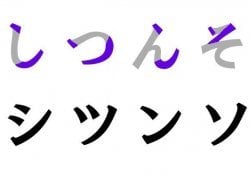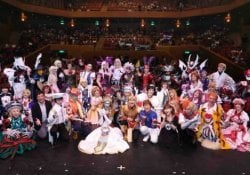Today we will examine a little of Japanese adjectives. Japanese adjectives are words that assign a quality or characteristic to nouns. In the Japanese language, adjectives can be divided into 2 types, we write an article about adjectives, you can read by clicking here.
If you read our previous article, you must have learned the past and negative forms. Today we are going deeper into grammar and we are going to study the forms "-sa" and "-sou".
Índice de Conteúdo
-sa form
The Japanese language is very flexible with adjectives. The shape "-sa" allows you to transform a finished adjective into "-i" in a noun or similar word.
It is very easy to do this. Just replace the i at the end of the adjective "sa". Example: 楽しい (tanoshii, pleasant) becomes joy when we put the "sa" 楽しさ (tanoshisa).
See some more examples:
| Adjective | Romaji | Meaning | Forma SA | Romaji | Meaning |
| 楽しい | Tanoshi i | nice | 楽しさ | Tanoshi sa | joy |
| 美しい | Utsukushi i | beautiful | 美しさ | Utsukushi sa | beauty |
| 新しい | Atarashi i | new | 新しさ | Atarashi sa | news |
| 赤しい | "Also known as" i | red | 赤さ | "Also known as" sa | redness |
| 大しい | Ooki i | great | 大きさ | Ooki sa | size, dimensions |
Example sentence:
- 日本 の お 寺 の 美 し さ が 好 き で す;
- nihon no otera no utsukushisa ga suki desu;
- I like the beauty of Japanese temples.
form -am
The way I am expressed that something seems to be in a certain way. It is used in some cases to say something like: it looks red (akasou).
Just replace the last "i" of the adjective with "sou". Example: 楽しい (tanoshii, pleasant) becomes 楽しそう (tanoshisou) or something like: It looks fun or pleasant.
| Adjective | Romaji | Meaning | Shape am | Romaji |
| 楽しい | Tanoshi i | nice | 楽しそう | Tanoshi am |
| 美しい | Utsukushi i | beautiful | 美しそう | Utsukushi am |
| 新しい | Atarashi i | new | 新しそう | Atarashi am |
| 赤い | "Also known as" i | red | 赤そう | "Also known as" am |
| 大きい | Ooki i | great | 大きそう | Ooki am |
Example sentence:
- こ の 料理 は と て も 美味 し そ う で す;
- こ の り ょ う り は と て も お い し そ う で す;
- Kono Ryouri wa totemo oishisou desu;
- This dish looks very delicious;
- このスポーツは簡単そう。
- Kono SUPOUTSU wa kantansou;
- This sport seems simple;
Shape me
The form -me as well as the previous ones is created by replacing the "i" with "me" and is used to give a meaning or comparison of "more or less", "approximately", "half" and "about" in some adjectives , very similar to the English "-ish".
A comparison is not always made, in some adjectives this is just a complement and makes the sentence a little more polished.
The origin of the form "me" it really comes from kanji with eyes. We must remember that - eye 目(め) also means a trend, an inclination, a point of view, an experience and of course a comparative. You must be careful not to confuse the "me" in adjectives with eyes, because this can be very easy. 小さ目 can be confused with small eyes, so when finishing an adjective with me, we don't use kanji.
Look some examples:
Remembering that putting a fully correct translation for these adjectives is a bit complicated, just studying these words and living to understand the true essence and feeling that each adjective has.
- 大きい = Large / 大きめ = Larger
- 早い = Fast / 早め = Early
- 早めに着いた hayame ni tsuita = I arrived early
- 小さめ = a little small
I wish I could explain more how "-me" but I still find it quite complex. If you have some simpler examples or explanations, comment to help readers understand a little more about the way -me like the other forms mentioned in the article.





